Every day is a school day, and every year I like to feel that I am still learning in my kitchen and garden. I have been growing food and cooking for so many years, but still feel as if my knowledge is growing. Continuing to grow as people doesn’t need to stop as we age.
We are never to old to learn. People are afraid to make mistakes, but sometimes that is the best way to learn. Fortunately I have also learned from taking risks, or from the experience of others. I think the more that you learn, the more you realise what you don’t know. Here are some random things that I learned this year.
1. When making a passatta or tomato sauce for water bathing, yellow tomatoes should not be used. I therefore saved mine for salads and used most of my red ones.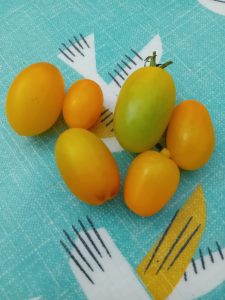
2. Usually it takes 2 years to get carrot seeds. Normally they are produced by replanting a carrot grown the year before. This year I cheated. I pulled a carrot and replanted it 10 days later. It has produced a carrot flower. I will therefore have seeds to collect. My carrots were the best I have ever grown this year. They were massive but still tasty. They were a variety from Real Seeds called Manchester Table carrots.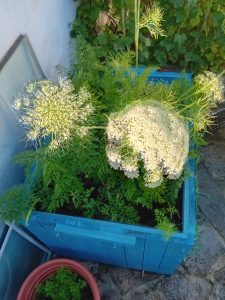
3. Planting crops in February in raised boxes with an old double glass window on top extended my growing season massively, and provided early vegetables. My dining room conservatory wasn’t as full of plants this year before the last frost. I will do the same in Autumn with crops like spinach and pak choi as the frosts arrive.
4. When dehydrating items, they need to be totally cold before storing them in a jar. Mould can occur otherwise. Even grinding herbs in a coffee grinder adds heat and the herbs need to cool before putting in jars. 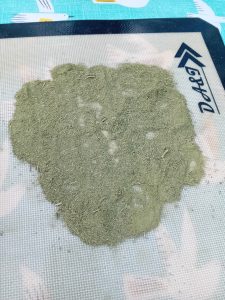
5. I can store so much more food in a small space by dehydrating. In previous years I have dehydrated herbs, fruit leathers, and apples. Due to a really good growing season, and lots of sunshine, I have saved more of my crops by dehydrating them this year. Most of them have been dehydrated by the sunshine, but sometimes finished off in the air fryer. The dehydrator that we got for Christmas last year took longer than the sun and so was redundant.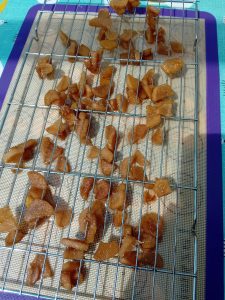
6. That flour can be made from Birch twigs in the winter. I am going to try this. I am always looking for new ways to grow or collect grains, or make flour. It helps me be more self sustainable and means that I don’t have to buy as much flour. This saves money.
7. That if using Hawthorn berries, they are usually sweeter after a frost. I have picked some already to make tea, but will pick some more later in the year to compare them.
8. I don’t need to get bananas to ripen my green tomatoes. Placing them with ripe tomatoes does the trick. Ripe tomatoes give off more Ethylene than bananas. This year I have been picking my tomatoes semi green and just as they start to blush. I have then placed them in egg trays in my kitchen with ripe tomatoes. The have ripened within 2 days. It is the warmth that ripens the tomastoes and not the sun.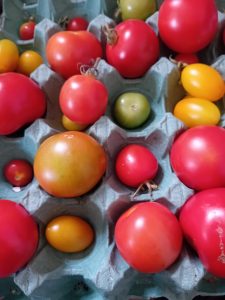
9. I have used succession planting for many years, mainly to prolong the crop and reduce gluts. This year I have heard of so many people who have had failures in crops due to the weather, eg. green beans. I did 4 sowings of green beans. The first sowing failed but I had sown some more 3 weeks later. More were sown with 2 weeks in between. My first ones failled. The second lot weren’t brilliant, but the last 2 sowings gave me more beans than I have ever had before.
10. It is possible to grow 2 lots of broad beans in a season. The second lot I planted out in June and harvested in August. The beans were not as big as the 1st crop, but they tasted sweeter and were numerous.
11. The nutrient density of seeds. I have scattered bought seeds in yoghurt, collected nettle seeds from nettles and grown microgreens. However I haven’t thought about why seeds are so good for us. It is because they are nutrient dense as they are intended to sustain a new plant. They are also rich in fibre which can help with heart healthness, lower blood pressure, and regulate blood sugar. I intend to keep incorporating more seeds into my diet.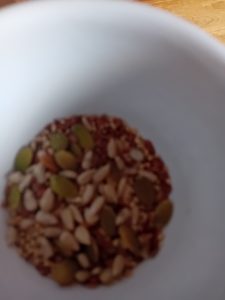
12. Herbal tea can be made from so many things that grow incthe wild, in the garden, or in my cupboards. I don’t need to buy herbal tea bags any more. Today I had crab apple and mint picked on a walk. A person in my group recommended it. My favourite is Fennel seeds that I harvest from my garden.
There are probably more things that I have learned this year off the top of my head. What are so.e of the things that you have learned? Sharing is caring.

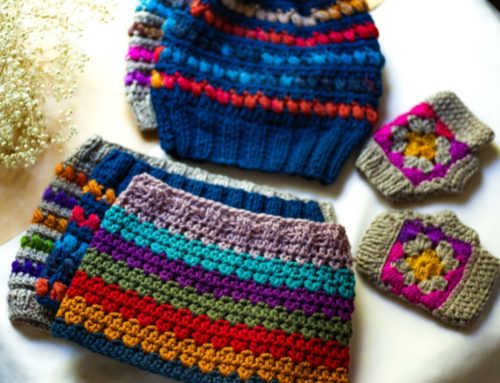


Quite a few of those were totally new to me so thanks Toni
No worries
These tips are really helpful to me – thank you, Toni. I try every year to get more out of my allotment and my foraging, so I’ll be following your advice! 😊
No worries. Yes it helps whencwe can implament new learning each year. Thanks for commenting
Your choices of things to make flour from amazes me!
Learning a lot from hisory and Eastern Europeans 😊
Ive stopped buying herbal teas as well, just have lemon and ginger mainly, but will need to experiment and make more ,I usually drink these after my tea. I agree about seeds in your diet I’ve been having them in my porridge now and will put into my next batch of smoothies. Another great article Toni thank you x
Thanks for your kind feedback
I have just learned about the carrot and seeds, so when one has accidently been left in the garden it is in it’s second year, that is very interesting as I didn’t know that, thank you.
No worries
The financially most important thing I learned this year is that a 25 kg packet of skimmed milk powder is less than half price, closer to 1/3 of the price of fresh milk – plus it saves me no end of trips to the supermarket with all it`s temptations. I used to think that I only bought what I needed, when I was there, but goodness no, my food expenses have dropped considerably more than the savings on my milk can explain. Shelf life is supposedly 10 months, but I am sure it will be perfectly fine for longer than that. It is fatty things, that go rancid, there is very little fat in skimmed milk powder. On arrival, I transfer it to plastic containers to keep it safe, each with enough for about 2 weeks supply.
Another thing, I have learned recently, is that fresh yeast, contrary to a lot of “information” on the internet, can happily be frozen in a plastic bag. I even, when I want only 1/2 or 1/3 of a packet, take a packet out, partially or wholly thaw it, cut of the bit I want and refreeze the rest, no problem. No more dried up or mouldy yeast to be thrown out from the fridge or expensive dried yeast.
I used to “know”, that whipping cream could not be whipped after having being frozen – however, it can indeed, one just have to use the stick blender to whisk it. This enabled me to buy discounted cream at the Christmas sales to be used for a large birthday party mid summer.
Also (I have mentioned this in an earlier comment) I have this year learned, that one can grow potato plants from the shoots alone, starting them off in pots. So one or two potatoes, stored wrapped in newspaper & a plastic bag in the fridge when not wanted for shoots can give no end of potato plants for several years. I am carefull to mark the seed potatoes, so that no one accidentally uses them for cooking, as they happen to be bought seed potatoes and these are treated with all sorts of poisenous nasties. I might swap them out with a few potatoes, that I hadn`t covered sufficiently in the garden this year, so they went green. They are thus useless in the kitchen, but fine as seed potatoes and not easily mistaken for something edible.
I do track my expenses. Doing so calmes my nerves and teaches me a lot about how to make the most of my money. I do this on an Excell sheet, thanks to my endlessly helpfull children, and have grown to love this. Recently I learned to do a search for specific items in the Excell sheet. So when oats are reduced to half price, I can quickly check how many packets of oats, I get through in a year and buy accordingly. Or flour -butter – sugar – cream – toilet paper – toothpaste – whatever. I am fortunate to have the storage space and this enables me to make the very most of this knowledge. It also gives me a clear idea of how frequently and often also which months these offers recurrently occur, so I know how big a stock is relevant. For instance, oats are typically on offer at half price after Christmas and after the summer holidays.
Lots of brilliant tips and information here. Thank you. I am using milk powder that is nearly 2 years out of date as I bought a big bag too. However we stopped eating breakfast or making as much custard. 🤦♂️
Thank you Toni. Really helpful blog and responses. Now I‘m going to start collecting herbal tea ingredients and learn how to search my excel spreadsheet.
Brilliant. I will be doing a blog about blending teas in the next few weeks. I have berries drying in the sunshine today that I will use.
For your information, I just tried out using rose hip kernels to make a flour. I mixed a handfull coarsely chopped in with the crumble topping on a large apple crumble. I should have been more diligent pulverising it, there were a few whole kernels left in it and they are quite hard to encounter, but it was really very nice otherwise. It has a flavour reminescent of apricots, very pleasing. I shall do this again, and next year I shall save all the kernels for myself. I have two trays of them drying in the south facing windows now, having found rose hips that were cut down in the summer and therefore are fruiting now. The poor chickens will have to make do with the rose hips that I pick especially for them, without the extra supply of protein and mineral and vitamin rich rose hip kernels hitherto wasted by me. For the chickens, I do pressure cook the rose hips before serving to prevent hips seeding all over my garden.
I think they would be nice in buns and bread as well and I might try a handfull in pumpkin soup.
Did you get rid of the seeds and the hairs first?
The kernels are the seeds. And nope, I just scooped them out of the hips ( the big rose hips), chopped a handfull of them up in the blender and popped them in my crumble. The ones, I didn’t use that day are drying on trays in my southfacing windowsill. The kernels are nearly 10 % protein plus a lot of beneficial oils and vitamins.
The rose hips themselves I have popped in the freezer for rose hip soups and purees. They contain impressing 8 times the vitamin C of lemons. And they are free….
I think the hairs are a bit like nettle hairs, they don’t survive drying or cooking.
I’m absolutely thrilled to have found out about this and that it actually has a very pleasing flavour. Just had to share…
I just use them for syrup to sweeten and add vitamin C but I might pick some more and try making flour. Thanks
One firm, that sells rose hip kernel flour, suggests up to 25% of this flour in bread dough.
Thanks. Yes I put 20% of dock seed flour into bread.